Brand: DeFelsko - US
Model: PosiTector 6000 series with NAS Probe
Technical Specification:
|
PosiTector 6000 Series Probe Model |
NAS |
| Range |
0-25 mils 0-625 um |
| Accuracy |
± (0.02 mil + 1%) 0-4 mils ± (0.1 mil + 3%) >4 mils ± (0.5 um + 1%) 0-100 um ± (2 um + 3%) > 100 um |
Measuring Anodizing Thickness on Aluminum:
Referenced products:
PosiTector 6000
DeFelsko manufactures a hand-held, non-destructive coating thickness gage that is ideal for measuring the thickness of anodizing on aluminum.
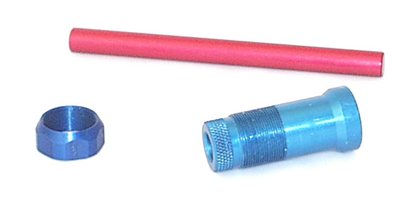
A secondary challenge is the measurement of anodizing in small or hard-to-reach areas.
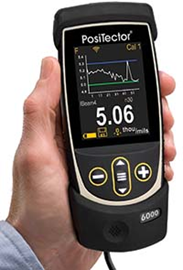
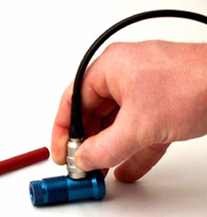
Figure 1 - PosiTector 6000 NAS probe measuring anodizing
When measuring coating thickness on small or hard-to-reach areas, the PosiTector 6000 N Microprobe series is an ideal measurement alternative. With probe tips of either 0°, 45° or 90° thickness readings can be taken in deep holes, on small ledges or on inside diameters. When a fixture or quick release adapter is used, N microprobes have identical specifications as the NAS probes.
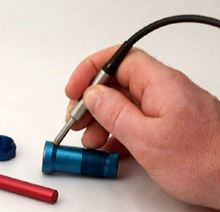
Figure 2 - PosiTector 6000 N Microprobe measuring anodizing
What is Anodizing?
Anodizing is an electrochemical conversion process in existence since the 1930s. Several metals are capable of being anodized including aluminium, magnesium, titanium, and tantalum. Anodized aluminium is used in many applications due to its low cost, aesthetic qualities, and ideal mechanical properties.Unlike most protective coatings, anodizing permanently changes the outer structure of the metal. When aluminium is exposed to air it naturally develops a thin aluminium oxide film that seals the aluminium from further oxidation. The anodizing process makes the oxidized surface much thicker, up to several thousandths of an inch thick. The hardness of the anodized aluminium oxide coating rivals that of a diamond, enhancing the abrasion resistance of the aluminium. The added depth of the oxide layer improves the corrosion resistance of the aluminium, while making cleaning the surface easier. The porous nature of particular types of anodizing makes it possible to dye the aluminium a variety of colours, making it more attractive.
Anodizing typically ranges up to 5 mils thickness. The three most common variations of aluminium anodizing include chromic anodizing (type I), sulfuric anodizing (type II) and hard anodizing (type III).
- Chromic anodizing utilizes a chromic acid electrolyte and yields the thinnest coatings, only 0.02 to 0.1 mils thick (0.5 to 2.5 microns). 50% penetration into the substrate and 50% growth over original dimensions occurs. Chromic anodizing has the least effect on fatigue strength and is less corrosive, thus ideal for complex and difficult to rinse parts. Excellent for coating aluminium castings, most chromic anodized parts are used in military and aerospace applications and are more functional than decorative in nature.
- Sulfuric anodizing is the most common method of anodizing, utilizing sulfuric acid to yield coatings up to 1 mil (25 microns) thick. 67% penetration into the substrate and 33% growth over original dimensions occurs. Due to its permeable nature, sulfuric anodizing is excellent for colour dyeing and provides a base for primers, bonding agents, and organic coatings. Sulfuric anodizing provides corrosion resistance and is very durable. Typical applications include architecture, aerospace, manufacturing, automotive, and computers.
- Hard anodizing (a.k.a. hardcoating) utilizes a higher concentration sulfuric acid electrolyte at a lower temperature resulting in a tough outer skin with excellent abrasion resistance, corrosion resistance, colour fade resistance, dielectric strength, and surface hardness (Rockwell C-Scale up to 70). 50% penetration into the substrate and 50% growth over original dimensions occurs for a total thickness of 0.5 to 4 mils. Hard anodized metals have heightened surface roughness. Common uses include non-decorative food packing equipment, photocopier paper rolls, and exterior applications such as building storefronts and windows.
Aluminium Anodizing Process
The aluminium part is hung on stripped aluminium or titanium racks ensuring good electrical contact. Throughout the anodizing process, parts are affixed and the racks are suspended in a series of tanks.- The aluminium part is dipped in a hot tank containing a soak cleaning agent to remove all surface dirt.
- The part is rinsed to avoid contaminating the solution in subsequent tanks.
- The next tank de-oxidizes the part with an acid solution (chromic, sulfuric, nitric or phosphoric) removing the thin, non-uniform aluminium oxide surface.
- Again the part is rinsed to avoid tank contamination.
- Etching is performed by suspending the part in a tank containing a sodium hydroxide solution. Etching removes the natural shine of the aluminium and provide a soft, matte, textured appearance.
- The part is suspended in the anodizing tank, which contains a diluted acid and water mixture that is capable of permitting electrical current flow. The type of acid, percent solution, and temperature are all critical parameters and dependent on the desired finish and colour. The negative leg of the electrical circuit is connected to the rack of parts and the positive side of the circuit is connected to one or more ''cathodes'' that introduce electricity into the tank. Quantity and placement of the cathodes varies with the size and shape of the part, as well as the total square footage of the aluminium surface to be treated. Surfaces closest to the cathode will receive a thicker anodic coating. For normal sulfuric anodizing, a DC power source capable of producing up to 24 volts is used, with the voltage held generally between 18 and 24 volts. The amount of current applied to the anodizing tank will vary depending on the amount of surface to be treated, as a rule between 12 and 16 amps are required for each square foot of coverage. The electrolyte solution is agitated during the anodizing process to provide uniform solution temperature. The anodizing tank process, under normal conditions, takes less than an hour.
- To add colour (dye), the part is dipped in a tank with a diluted, water soluble, organic dye. Each dye varies in the length of time and temperature for this immersion.
- The final consideration in the anodizing process is sealing the now dyed outer surface so it doesn't sunlight bleach or stain. Unsealed, the porous outer surface has a lowered corrosion resistance. For non-dyed coatings, the anodized aluminium part is put into boiling de-ionized water for 20 to 30 minutes. This converts the unstructured pores of the aluminium oxide to a more solid crystalline hydrate form. If the anodized parts are dyed, the sealing process is performed for 3 to 5 minutes in a tank with a nickel acetate solution.
- Hard anodizing, depending on the process, uses a mixture of sulfuric and oxalic acid. Relatively low temperatures are used along with a higher current and a much higher voltage. The “gray” oxide layer produced is typically 2 to 3 mils and is very dense, wear, and corrosive resistant.
An alternative to racking is bulk anodizing which is more ideal for anodizing small, irregularly shaped parts such as rivets, ferrules, and medical hubs. Instead of racks, parts are processed in perforated aluminium, plastic, or titanium baskets. Whether you need coil or batch production, anodizing provides one of the best aluminium finishing options in the industry.
Another alternative is coil anodizing. Coiled aluminium is pre-anodized to lower finishing costs, save production time, and reduce material handling. Advantages of pre-anodized aluminium can be applied to most products that are fabricated from sheet or coil stock. Products that are made from extrusions, castings, rod, bar, or plate are limited to piece anodizing processes such as racking or bulk.
Though most aluminum alloys will build aluminum oxide in an anodizing tank, they tend to anodize differently. Some alloys are more difficult to anodize while others anodize to slightly different shades of color. When anodized, various alloys provide different levels of workability (machining, grinding, polishing), environmental resistance properties, and dimensional stability.
Why Anodize?
Anodizing is a highly effective and desirable means of finishing aluminum. Some of the primary advantages of anodizing include:- Durability - Most anodized parts experience no wear from handling, installation, usage, and maintenance
- Adhesion - Anodizing is part of the aluminum for total bonding and unmatched adhesion.
- Color – Anodized parts maintain good color stability when exposed to ultraviolet rays, do not have an applied coating that is subject to chipping or peeling, and have a repeatable coloring process.
- Quality of original finish – Parts are not subject to marking from the original anodizing process.
- Maintenance - Mild soap-and-water cleaning usually will restore an anodized profile to its original appearance.
- Aesthetics - Anodizing offers a large number of gloss and color alternatives, while allowing the metallic appearance of the extruded aluminum to show through.
- Cost - Anodizing is a very cost-effective value compared to other finishing methods. In addition to low processing and maintenance costs, durability minimizes replacement costs.
- Environment, health and safety - Anodizing is favorable towards current governmental regulations because it is one of the most environmentally friendly industrial processes and is typically not harmful to human health. An anodized finish is chemically stable, will not decompose, is nontoxic, and is heat-resistant to the melting point of aluminum. Since the anodizing process is a reinforcement of a naturally occurring oxide process, it is non-hazardous and produces no harmful or dangerous by-products. Chemical baths used in the anodizing process often are reclaimed, recycled, and reused.
Why Measure Anodizing Thickness?
The anodizing process parameters have a significant influence on the properties of the oxide formed. If low temperatures and acid concentrations are used, it yields a less porous and harder coating. Higher temperatures and acid content, along with longer immersion times produces softer, more porous coatings. Minor changes to the alloy itself or any of these parameters can significantly affect the coating.Through various process controls and measurement techniques, Anodizers are able to monitor, control and correct the anodized coating application. One of the most critical quality controls for anodizing is thickness. Thickness of anodizing can be measured non-destructively using an eddy current coating thickness gage or by calculating weight per unit area. The simplicity of the eddy current method is not only more efficient than the calculation method, but also enables the inspector to verify that adequate anodizing occurs across all surfaces of the part.






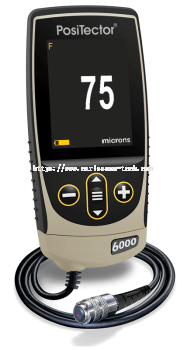




 US 13781
US 13781  GB 11403
GB 11403  CA 9505
CA 9505  AU 8991
AU 8991  IE 5199
IE 5199  NZ 3891
NZ 3891  BR 2825
BR 2825  SG 910
SG 910 



